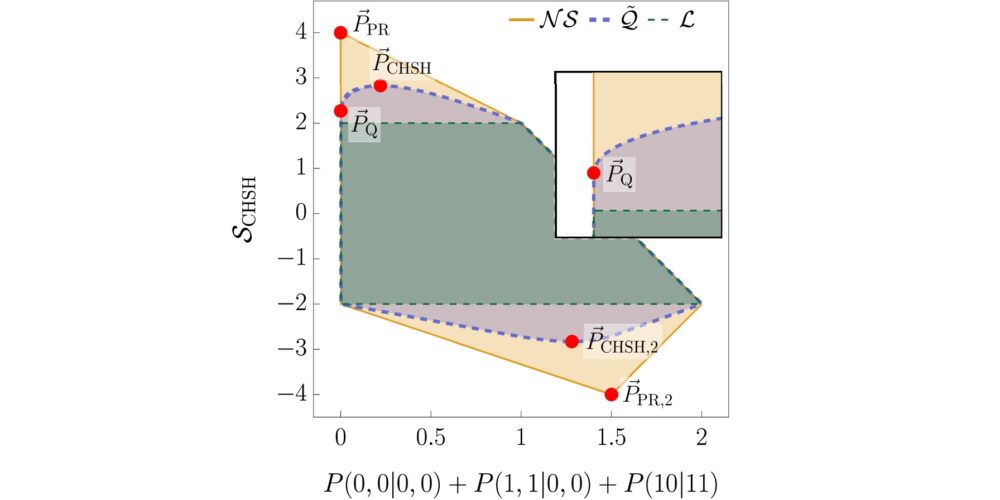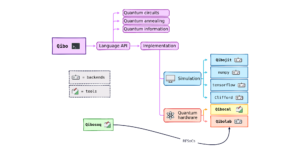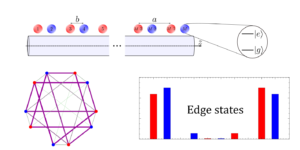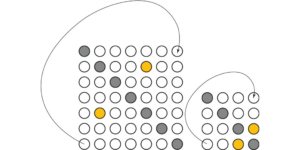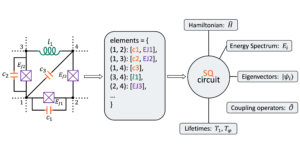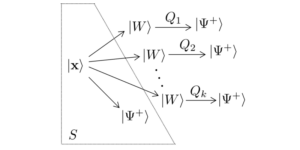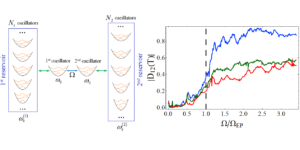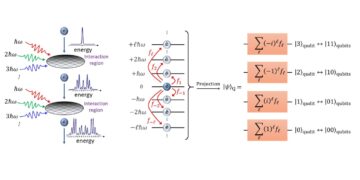1Department of Physics and Center for Quantum Frontiers of Research & Technology (QFort), National Cheng Kung University, Tainan 701, Taiwan
2Physics Division, National Center for Theoretical Sciences, Taipei 10617, Taiwan
3Center for Quantum Technology, National Tsing Hua University, Hsinchu 300, Taiwan
4Center for Theoretical Physics, Polish Academy of Sciences, Aleja Lotników 32/46, 02-668 Warsaw, Poland
5Department of Physics and Center for Quantum Information Science, National Cheng Kung University, Tainan 70101, Taiwan
6Department of Physics, Tamkang University, Tamsui, New Taipei 251301, Taiwan
Find this paper interesting or want to discuss? Scite or leave a comment on SciRate.
Abstract
In device-independent quantum information, correlations between local measurement outcomes observed by spatially separated parties in a Bell test play a fundamental role. Even though it is long-known that the set of correlations allowed in quantum theory lies strictly between the Bell-local set and the no-signaling set, many questions concerning the geometry of the quantum set remain unanswered. Here, we revisit the problem of when the boundary of the quantum set coincides with the no-signaling set in the simplest Bell scenario. In particular, for each Class of these common boundaries containing $k$ zero probabilities, we provide a $(5-k)$-parameter family of quantum strategies realizing these (extremal) correlations. We further prove that self-testing is possible in all nontrivial Classes beyond the known examples of Hardy-type correlations, and provide numerical evidence supporting the robustness of these self-testing results. Candidates of one-parameter families of self-testing correlations from some of these Classes are identified. As a byproduct of our investigation, if the qubit strategies leading to an extremal nonlocal correlation are local-unitarily equivalent, a self-testing statement provably follows. Interestingly, all these self-testing correlations found on the no-signaling boundary are provably non-exposed. An analogous characterization for the set $mathcal{M}$ of quantum correlations arising from finite-dimensional maximally entangled states is also provided. En route to establishing this last result, we show that all correlations of $mathcal{M}$ in the simplest Bell scenario are attainable as convex combinations of those achievable using a Bell pair and projective measurements. In turn, we obtain the maximal Clauser-Horne-Shimony-Holt Bell inequality violation by any maximally entangled two-qudit state and a no-go theorem regarding the self-testing of such states.
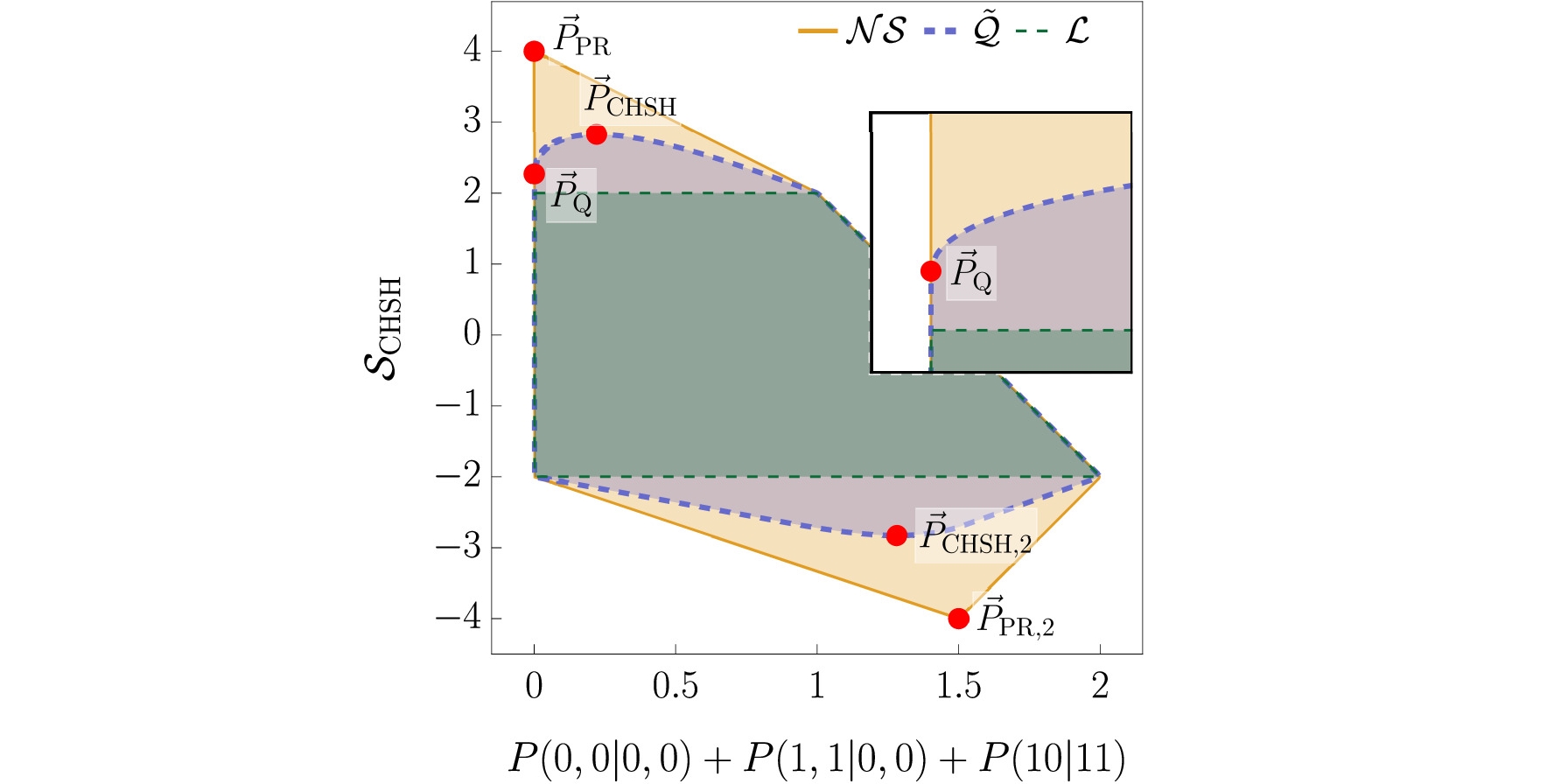
Featured image: A two-dimensional projection of the no-signaling set $mathcal{NS}$, an outer approximation $tilde{Q}$ of the quantum set, and the local set $mathcal{L}$ of correlations. All (quantum) correlations having the three zero entries $P(0,0|0,0)=P(1,1|0,0)=P(1,0|1,1)=0$ lie on the vertical line where the horizontal value is zero. Among them, $vec{P}_{mathcal{Q}}$ gives the maximal $mathcal{S}_{text{CHSH}}$ value and self-tests a quantum strategy.
► BibTeX data
► References
[1] S. Popescu and D. Rohrlich, Found. Phys. 24, 379 (1994).
https://doi.org/10.1007/BF02058098
[2] G. Brassard, H. Buhrman, N. Linden, A. A. Méthot, A. Tapp, and F. Unger, Phys. Rev. Lett. 96, 250401 (2006).
https://doi.org/10.1103/PhysRevLett.96.250401
[3] M. Navascués and H. Wunderlich, Proc. R. Soc. A 466, 881 (2009).
https://doi.org/10.1098/rspa.2009.0453
[4] M. Pawlowski, T. Paterek, D. Kaszlikowski, V. Scarani, A. Winter, and M. Zukowski, Nature 461, 1101 (2009).
https://doi.org/10.1038/nature08400
[5] M. Navascués, Y. Guryanova, M. J. Hoban, and A. Acín, Nat. Commun. 6, 6288 (2015).
https://doi.org/10.1038/ncomms7288
[6] J. S. Bell, Speakable and Unspeakable in Quantum Mechanics: Collected Papers on Quantum Philosophy, 2nd ed. (Cambridge University Press, 2004).
https://doi.org/10.1017/CBO9780511815676
[7] T. Norsen, Am. J. Phys. 79, 1261 (2011).
https://doi.org/10.1119/1.3630940
[8] J. S. Bell, Physics 1, 195 (1964).
https://doi.org/10.1103/PhysicsPhysiqueFizika.1.195
[9] N. Brunner, D. Cavalcanti, S. Pironio, V. Scarani, and S. Wehner, Rev. Mod. Phys. 86, 419 (2014).
https://doi.org/10.1103/RevModPhys.86.419
[10] V. Scarani, Acta Physica Slovaca 62, 347 (2012).
[11] A. Acín, N. Brunner, N. Gisin, S. Massar, S. Pironio, and V. Scarani, Phys. Rev. Lett. 98, 230501 (2007).
https://doi.org/10.1103/PhysRevLett.98.230501
[12] R. Colbeck, PhD thesis, arXiv:0911.3814 (2009).
https://doi.org/10.48550/arXiv.0911.3814
arXiv:0911.3814
[13] S. Pironio, A. Acín, S. Massar, A. B. d. l. Giroday, D. N. Matsukevich, P. Maunz, S. Olmschenk, D. Hayes, L. Luo, T. A. Manning, and C. Monroe, Nature 464, 1021 (2010).
https://doi.org/10.1038/nature09008
[14] R. Gallego, N. Brunner, C. Hadley, and A. Acín, Phys. Rev. Lett. 105, 230501 (2010).
https://doi.org/10.1103/PhysRevLett.105.230501
[15] J.-D. Bancal, N. Gisin, Y.-C. Liang, and S. Pironio, Phys. Rev. Lett. 106, 250404 (2011).
https://doi.org/10.1103/PhysRevLett.106.250404
[16] T. Moroder, J.-D. Bancal, Y.-C. Liang, M. Hofmann, and O. Gühne, Phys. Rev. Lett. 111, 030501 (2013).
https://doi.org/10.1103/PhysRevLett.111.030501
[17] Y.-C. Liang, D. Rosset, J.-D. Bancal, G. Pütz, T. J. Barnea, and N. Gisin, Phys. Rev. Lett. 114, 190401 (2015).
https://doi.org/10.1103/PhysRevLett.114.190401
[18] S.-L. Chen, C. Budroni, Y.-C. Liang, and Y.-N. Chen, Phys. Rev. Lett. 116, 240401 (2016).
https://doi.org/10.1103/PhysRevLett.116.240401
[19] F. Baccari, D. Cavalcanti, P. Wittek, and A. Acín, Phys. Rev. X 7, 021042 (2017).
https://doi.org/10.1103/PhysRevX.7.021042
[20] J.-D. Bancal, N. Sangouard, and P. Sekatski, Phys. Rev. Lett. 121, 250506 (2018).
https://doi.org/10.1103/PhysRevLett.121.250506
[21] M. Zwerger, W. Dür, J.-D. Bancal, and P. Sekatski, Phys. Rev. Lett. 122, 060502 (2019).
https://doi.org/10.1103/PhysRevLett.122.060502
[22] P. Sekatski, J.-D. Bancal, S. Wagner, and N. Sangouard, Phys. Rev. Lett. 121, 180505 (2018).
https://doi.org/10.1103/PhysRevLett.121.180505
[23] S.-L. Chen, C. Budroni, Y.-C. Liang, and Y.-N. Chen, Phys. Rev. A 98, 042127 (2018).
https://doi.org/10.1103/PhysRevA.98.042127
[24] R. Arnon-Friedman and J.-D. Bancal, New J. Phys. 21, 033010 (2019).
https://doi.org/10.1088/1367-2630/aafef6
[25] S. Wagner, J.-D. Bancal, N. Sangouard, and P. Sekatski, Quantum 4, 243 (2020).
https://doi.org/10.22331/q-2020-03-19-243
[26] S.-L. Chen, H.-Y. Ku, W. Zhou, J. Tura, and Y.-N. Chen, Quantum 5, 552 (2021).
https://doi.org/10.22331/q-2021-09-28-552
[27] A. Gočanin, I. Šupić, and B. Dakić, PRX Quantum 3, 010317 (2022).
https://doi.org/10.1103/PRXQuantum.3.010317
[28] Y.-C. Liang and Y. Zhang, Entropy 21 (2019).
https://doi.org/10.3390/e21020185
[29] D. Mayers and A. Yao, Quantum Info. Comput. 4, 273 (2004).
[30] I. Šupić and J. Bowles, Quantum 4, 337 (2020).
https://doi.org/10.22331/q-2020-09-30-337
[31] J. Wang, S. Paesani, Y. Ding, R. Santagati, P. Skrzypczyk, A. Salavrakos, J. Tura, R. Augusiak, L. Mančinska, D. Bacco, D. Bonneau, J. W. Silverstone, Q. Gong, A. Acín, K. Rottwitt, L. K. Oxenløwe, J. L. O’Brien, A. Laing, and M. G. Thompson, Science 360, 285 (2018).
https://doi.org/10.1126/science.aar7053
[32] W.-H. Zhang, G. Chen, X.-X. Peng, X.-J. Ye, P. Yin, X.-Y. Xu, J.-S. Xu, C.-F. Li, and G.-C. Guo, Phys. Rev. Lett. 122, 090402 (2019a).
https://doi.org/10.1103/PhysRevLett.122.090402
[33] W.-H. Zhang, G. Chen, P. Yin, X.-X. Peng, X.-M. Hu, Z.-B. Hou, Z.-Y. Zhou, S. Yu, X.-J. Ye, Z.-Q. Zhou, X.-Y. Xu, J.-S. Tang, J.-S. Xu, Y.-J. Han, B.-H. Liu, C.-F. Li, and G.-C. Guo, Npj Quantum Inf. 5, 4 (2019b).
https://doi.org/10.1038/s41534-018-0120-0
[34] S. Gómez, A. Mattar, I. Machuca, E. S. Gómez, D. Cavalcanti, O. J. Farías, A. Acín, and G. Lima, Phys. Rev. A 99, 032108 (2019).
https://doi.org/10.1103/PhysRevA.99.032108
[35] J.-D. Bancal, K. Redeker, P. Sekatski, W. Rosenfeld, and N. Sangouard, Quantum 5, 401 (2021).
https://doi.org/10.22331/q-2021-03-02-401
[36] D. Wu, Q. Zhao, C. Wang, L. Huang, Y.-F. Jiang, B. Bai, Y. Zhou, X.-M. Gu, F.-M. Liu, Y.-Q. Mao, Q.-C. Sun, M.-C. Chen, J. Zhang, C.-Z. Peng, X.-B. Zhu, Q. Zhang, C.-Y. Lu, and J.-W. Pan, Phys. Rev. Lett. 128, 250401 (2022).
https://doi.org/10.1103/PhysRevLett.128.250401
[37] J. Barrett, N. Linden, S. Massar, S. Pironio, S. Popescu, and D. Roberts, Phys. Rev. A 71, 022101 (2005).
https://doi.org/10.1103/PhysRevA.71.022101
[38] P. Horodecki and R. Ramanathan, Nat. Commun. 10, 1701 (2019).
https://doi.org/10.1038/s41467-019-09505-2
[39] P. M. Pearle, Phys. Rev. D 2, 1418 (1970).
https://doi.org/10.1103/PhysRevD.2.1418
[40] S. L. Braunstein and C. M. Caves, Ann. Phys. 202, 22 (1990).
https://doi.org/10.1016/0003-4916(90)90339-P
[41] J. Barrett, A. Kent, and S. Pironio, Phys. Rev. Lett. 97, 170409 (2006).
https://doi.org/10.1103/PhysRevLett.97.170409
[42] K. T. Goh, J. Kaniewski, E. Wolfe, T. Vértesi, X. Wu, Y. Cai, Y.-C. Liang, and V. Scarani, Phys. Rev. A 97, 022104 (2018).
https://doi.org/10.1103/PhysRevA.97.022104
[43] R. Colbeck and R. Renner, Nat. Commun. 2, 411 (2011).
https://doi.org/10.1038/ncomms1416
[44] R. Colbeck and R. Renner, Nat. Phys. 8, 450 (2012).
https://doi.org/10.1038/nphys2300
[45] G. Pütz, D. Rosset, T. J. Barnea, Y.-C. Liang, and N. Gisin, Phys. Rev. Lett. 113, 190402 (2014).
https://doi.org/10.1103/PhysRevLett.113.190402
[46] M. Kessler and R. Arnon-Friedman, IEEE J. Sel. Areas Commun. 1, 568 (2020).
https://doi.org/10.1109/JSAIT.2020.3012498
[47] L. Hardy, Phys. Rev. Lett. 71, 1665 (1993).
https://doi.org/10.1103/PhysRevLett.71.1665
[48] R. Ramanathan, M. Horodecki, H. Anwer, S. Pironio, K. Horodecki, M. Grünfeld, S. Muhammad, M. Bourennane, and P. Horodecki, arXiv:1810.11648 (2018).
https://doi.org/10.48550/arXiv.1810.11648
arXiv:1810.11648
[49] A. Rai, C. Duarte, S. Brito, and R. Chaves, Phys. Rev. A 99, 032106 (2019).
https://doi.org/10.1103/PhysRevA.99.032106
[50] R. Rabelo, L. Y. Zhi, and V. Scarani, Phys. Rev. Lett. 109, 180401 (2012).
https://doi.org/10.1103/PhysRevLett.109.180401
[51] S. Kunkri, S. K. Choudhary, A. Ahanj, and P. Joag, Phys. Rev. A 73, 022346 (2006).
https://doi.org/10.1103/PhysRevA.73.022346
[52] L.-M. Liang and C.-Z. Li, Phys. Lett. A 335, 371 (2005).
https://doi.org/10.1016/j.physleta.2004.12.046
[53] A. Rai, M. Pivoluska, M. Plesch, S. Sasmal, M. Banik, and S. Ghosh, Phys. Rev. A 103, 062219 (2021).
https://doi.org/10.1103/PhysRevA.103.062219
[54] A. Rai, M. Pivoluska, S. Sasmal, M. Banik, S. Ghosh, and M. Plesch, Phys. Rev. A 105, 052227 (2022).
https://doi.org/10.1103/PhysRevA.105.052227
[55] J. F. Clauser, M. A. Horne, A. Shimony, and R. A. Holt, Phys. Rev. Lett. 23, 880 (1969).
https://doi.org/10.1103/PhysRevLett.23.880
[56] D. Collins and N. Gisin, J. Phys. A: Math. Gen. 37, 1775 (2004).
https://doi.org/10.1088/0305-4470/37/5/021
[57] A. Peres, Found. Phys. 20, 1441 (1990).
https://doi.org/10.1007/BF01883517
[58] Y.-C. Liang, T. Vértesi, and N. Brunner, Phys. Rev. A 83, 022108 (2011a).
https://doi.org/10.1103/PhysRevA.83.022108
[59] T. Vidick and S. Wehner, Phys. Rev. A 83, 052310 (2011).
https://doi.org/10.1103/PhysRevA.83.052310
[60] M. Junge and C. Palazuelos, Commun. Math. Phys. 306, 695 (2011).
https://doi.org/10.1007/s00220-011-1296-8
[61] B. G. Christensen, Y.-C. Liang, N. Brunner, N. Gisin, and P. G. Kwiat, Phys. Rev. X 5, 041052 (2015).
https://doi.org/10.1103/PhysRevX.5.041052
[62] P.-S. Lin, T. Vértesi, and Y.-C. Liang, Quantum 6, 765 (2022).
https://doi.org/10.22331/q-2022-07-14-765
[63] C. Jebarathinam, J.-C. Hung, S.-L. Chen, and Y.-C. Liang, Phys. Rev. Research 1, 033073 (2019).
https://doi.org/10.1103/PhysRevResearch.1.033073
[64] J. Kaniewski, Phys. Rev. Research 2, 033420 (2020).
https://doi.org/10.1103/PhysRevResearch.2.033420
[65] N. Gigena and J. Kaniewski, Phys. Rev. A 106, 012401 (2022).
https://doi.org/10.1103/PhysRevA.106.012401
[66] L. Masanes, Phys. Rev. Lett. 97, 050503 (2006).
https://doi.org/10.1103/PhysRevLett.97.050503
[67] T. Franz, F. Furrer, and R. F. Werner, Phys. Rev. Lett. 106, 250502 (2011).
https://doi.org/10.1103/PhysRevLett.106.250502
[68] L. Mančinska and S. Wehner, J. Phys. A: Math. Theo. 47, 424027 (2014).
https://doi.org/10.1088/1751-8113/47/42/424027
[69] T. Fritz, Found. Phys. 41, 1493 (2011).
https://doi.org/10.1007/s10701-011-9563-2
[70] K. F. Pál and T. Vértesi, Phys. Rev. A 80, 042114 (2009).
https://doi.org/10.1103/PhysRevA.80.042114
[71] J. M. Donohue and E. Wolfe, Phys. Rev. A 92, 062120 (2015).
https://doi.org/10.1103/PhysRevA.92.062120
[72] Y.-C. Liang, Correlations, Bell Inequality Violation & Quantum Entanglement, Ph.D. thesis, University of Queensland (2008).
https://doi.org/10.48550/arXiv.0810.5400
[73] R. F. Werner, Phys. Rev. A 40, 4277 (1989).
https://doi.org/10.1103/PhysRevA.40.4277
[74] Y.-C. Liang, R. W. Spekkens, and H. M. Wiseman, Phys. Rep. 506, 1 (2011b).
https://doi.org/10.1016/j.physrep.2011.05.001
[75] A. Fine, Phys. Rev. Lett. 48, 291 (1982).
https://doi.org/10.1103/PhysRevLett.48.291
[76] Y. Xiang, Chin. Phys. B 20, 060301 (2011).
https://doi.org/10.1088/1674-1056/20/6/060301
[77] T. H. Yang, T. Vértesi, J.-D. Bancal, V. Scarani, and M. Navascués, Phys. Rev. Lett. 113, 040401 (2014).
https://doi.org/10.1103/PhysRevLett.113.040401
[78] J.-D. Bancal, M. Navascués, V. Scarani, T. Vértesi, and T. H. Yang, Phys. Rev. A 91, 022115 (2015).
https://doi.org/10.1103/PhysRevA.91.022115
[79] T. F. Jordan, Phys. Rev. A 50, 62 (1994).
https://doi.org/10.1103/PhysRevA.50.62
[80] M. T. Quintino, M. Araújo, D. Cavalcanti, M. F. Santos, and M. T. Cunha, J. Phys. A: Math. Theo. 45, 215308 (2012).
https://doi.org/10.1088/1751-8113/45/21/215308
[81] Y. Wang, X. Wu, and V. Scarani, New J. Phys. 18, 025021 (2016).
https://doi.org/10.1088/1367-2630/18/2/025021
[82] K.-S. Chen et al., “Generalizing Hardy’s paradox by means of the failure of transitivity of implications,” (in preparation).
[83] A. Cabello, Phys. Rev. A 65, 032108 (2002).
https://doi.org/10.1103/PhysRevA.65.032108
[84] R. Cleve, P. Hoyer, B. Toner, and J. Watrous, in Proceedings. 19th IEEE Annual Conference on Computational Complexity, 2004. (2004) pp. 236–249.
https://doi.org/10.1109/CCC.2004.1313847
[85] Y.-C. Liang and A. C. Doherty, Phys. Rev. A 75, 042103 (2007).
https://doi.org/10.1103/PhysRevA.75.042103
[86] G. M. D’Ariano, P. L. Presti, and P. Perinotti, J. Phys. A: Math. Gen. 38, 5979 (2005).
https://doi.org/10.1088/0305-4470/38/26/010
[87] W. K. Wootters, Phys. Rev. Lett. 80, 2245 (1998).
https://doi.org/10.1103/PhysRevLett.80.2245
[88] Y.-C. Liang and A. C. Doherty, Phys. Rev. A 73, 052116 (2006).
https://doi.org/10.1103/PhysRevA.73.052116
[89] J. Kaniewski, Phys. Rev. Lett. 117, 070402 (2016).
https://doi.org/10.1103/PhysRevLett.117.070402
[90] T. P. Le, C. Meroni, B. Sturmfels, R. F. Werner, and T. Ziegler, Quantum 7, 947 (2023).
https://doi.org/10.22331/q-2023-03-16-947
[91] J. Kaniewski, (private communication).
[92] J.-L. Chen, A. Cabello, Z.-P. Xu, H.-Y. Su, C. Wu, and L. C. Kwek, Phys. Rev. A 88, 062116 (2013).
https://doi.org/10.1103/PhysRevA.88.062116
[93] M. Navascués, S. Pironio, and A. Acín, New J. Phys. 10, 073013 (2008).
https://doi.org/10.1088/1367-2630/10/7/073013
[94] A. C. Doherty, Y.-C. Liang, B. Toner, and S. Wehner, in 23rd Annu. IEEE Conf. on Comput. Comp, 2008, CCC’08 (Los Alamitos, CA, 2008) pp. 199–210.
https://doi.org/10.1109/CCC.2008.26
[95] S. L. Braunstein, A. Mann, and M. Revzen, Phys. Rev. Lett. 68, 3259 (1992).
https://doi.org/10.1103/PhysRevLett.68.3259
[96] S. Boyd and L. Vandenberghe, Convex Optimization, 1st ed. (Cambridge University Press, Cambridge, 2004).
Cited by
[1] Antoni Mikos-Nuszkiewicz and Jędrzej Kaniewski, “Extremal points of the quantum set in the CHSH scenario: conjectured analytical solution”, arXiv:2302.10658, (2023).
The above citations are from SAO/NASA ADS (last updated successfully 2023-07-11 22:31:20). The list may be incomplete as not all publishers provide suitable and complete citation data.
On Crossref’s cited-by service no data on citing works was found (last attempt 2023-07-11 22:31:19).
This Paper is published in Quantum under the Creative Commons Attribution 4.0 International (CC BY 4.0) license. Copyright remains with the original copyright holders such as the authors or their institutions.
- SEO Powered Content & PR Distribution. Get Amplified Today.
- PlatoData.Network Vertical Generative Ai. Empower Yourself. Access Here.
- PlatoAiStream. Web3 Intelligence. Knowledge Amplified. Access Here.
- PlatoESG. Automotive / EVs, Carbon, CleanTech, Energy, Environment, Solar, Waste Management. Access Here.
- BlockOffsets. Modernizing Environmental Offset Ownership. Access Here.
- Source: https://quantum-journal.org/papers/q-2023-07-11-1054/
- :is
- :not
- :where
- ][p
- 1
- 10
- 11
- 116
- 12
- 13
- 14
- 15%
- 16
- 17
- 19
- 195
- 1994
- 1998
- 1st
- 20
- 2005
- 2006
- 2008
- 2011
- 2012
- 2013
- 2014
- 2015
- 2016
- 2017
- 2018
- 2019
- 202
- 2020
- 2021
- 2022
- 2023
- 22
- 23
- 24
- 25
- 26%
- 27
- 28
- 30
- 31
- 32
- 33
- 36
- 39
- 40
- 49
- 50
- 51
- 60
- 66
- 67
- 7
- 70
- 72
- 75
- 77
- 8
- 80
- 84
- 87
- 9
- 91
- 98
- a
- above
- ABSTRACT
- Academy
- access
- affiliations
- AL
- All
- allowed
- also
- am
- among
- an
- Analytical
- and
- annual
- any
- ARE
- areas
- AS
- Attainable
- author
- authors
- Barnea
- BE
- Bell
- between
- Beyond
- boundaries
- boundary
- Break
- by
- CA
- cambridge
- candidates
- ccc
- Center
- chen
- Cheng
- chin
- Christensen
- class
- classes
- combinations
- comment
- Common
- Commons
- Communication
- COMP
- complete
- complexity
- Conference
- Convex
- copyright
- Correlation
- data
- discuss
- Division
- e
- E&T
- each
- ed
- entanglement
- Equivalent
- establishing
- Even
- evidence
- examples
- Failure
- families
- family
- fine
- follows
- For
- found
- from
- Frontiers
- fundamental
- further
- Gen
- gives
- Gomez
- harvard
- having
- here
- holders
- Horizontal
- HTTPS
- huang
- i
- identified
- IEEE
- if
- image
- implications
- in
- info
- information
- institutions
- interesting
- International
- investigation
- IT
- JavaScript
- Jed
- Jordan
- journal
- jpg
- known
- Last
- leading
- Leave
- Li
- License
- lie
- lies
- lin
- Line
- List
- local
- los
- many
- math
- max-width
- May..
- means
- measurement
- measurements
- mechanics
- Month
- more
- National
- Nature
- New
- no
- obtain
- of
- on
- open
- optimization
- or
- original
- our
- outcomes
- pages
- pair
- Paper
- papers
- Paradox
- particular
- parties
- philosophy
- Physics
- plato
- Plato Data Intelligence
- PlatoData
- Play
- points
- Polish
- possible
- preparation
- press
- private
- Problem
- PROC
- Proceedings
- Projection
- provably
- Prove
- provide
- provided
- published
- publisher
- publishers
- Quantum
- quantum entanglement
- quantum information
- Quantum Mechanics
- quantum technology
- Qubit
- Questions
- ramanathan
- realizing
- references
- regarding
- remain
- remains
- research
- result
- Results
- robustness
- Role
- Route
- s
- scenario
- Science
- SCIENCES
- set
- show
- Silverstone
- solution
- some
- State
- Statement
- States
- strategies
- Strategy
- Successfully
- such
- suitable
- Sun
- Supporting
- Technology
- test
- that
- The
- their
- Them
- theoretical
- theory
- These
- thesis
- this
- those
- though?
- three
- Title
- to
- TURN
- under
- university
- updated
- URL
- using
- value
- vertical
- VIOLATION
- volume
- W
- want
- Warsaw
- was
- we
- when
- Winter
- with
- works
- wu
- X
- Ye
- year
- zephyrnet
- zero
- Zhao

